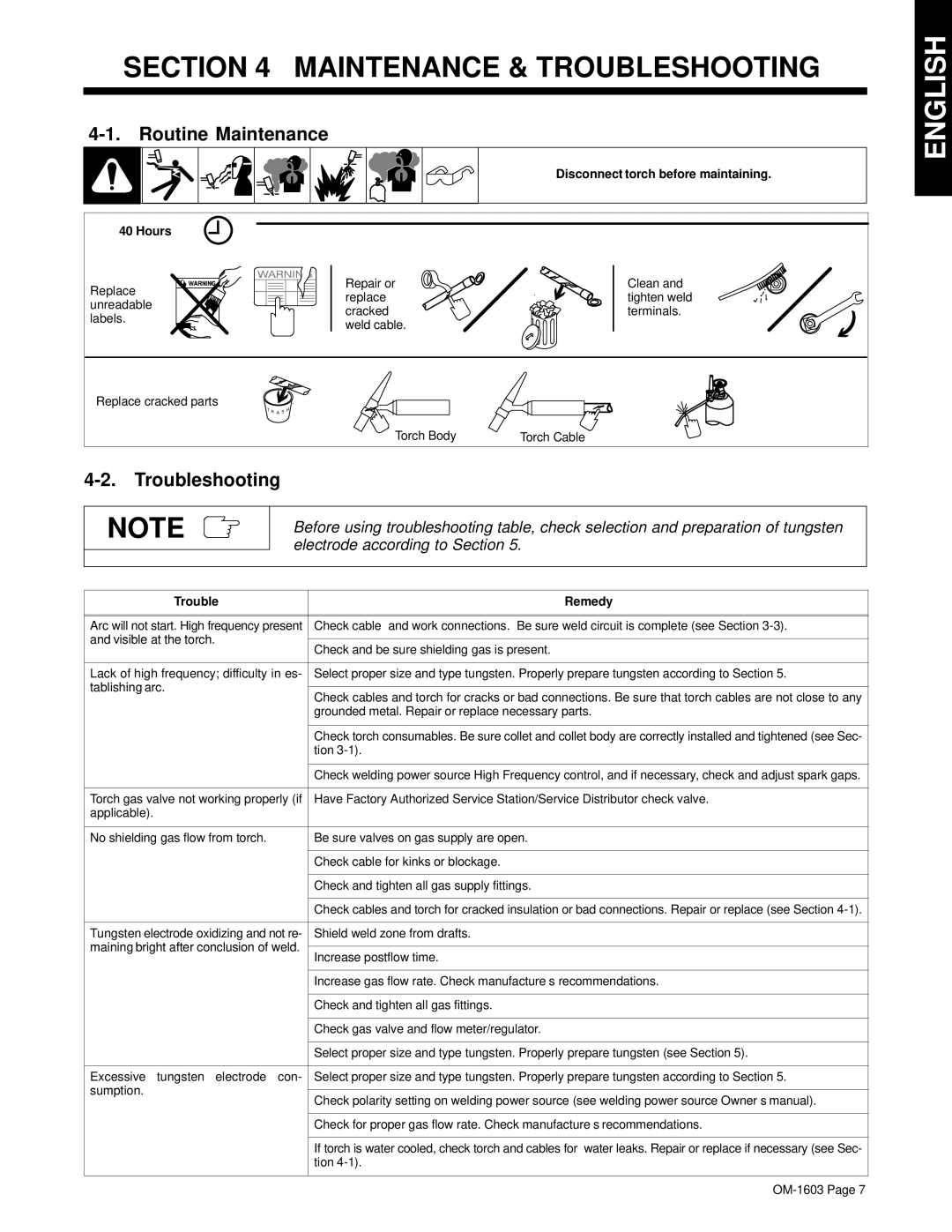DB1812R, DB1825R specifications
The Miller Electric DB1825R and DB1812R are robust welders designed for professionals seeking superior performance and versatility in their welding applications. Both models reflect Miller Electric's commitment to innovation, combining advanced technology with practicality for optimal results in a variety of environments.One of the main features of the DB1825R and DB1812R is their dual voltage capability, allowing operators to easily switch between 120V and 240V input power. This flexibility is essential for users who need to work in different locations or vary their power supply. They are also equipped with the latest inverter technology, which significantly enhances efficiency and reduces energy consumption while maintaining high output quality.
For welding processes, both models support MIG, Flux-Cored, TIG, and Stick welding, making them multifunctional options for various tasks. The DB1825R features a maximum output of 250 amps, while the DB1812R offers up to 200 amps, providing ample power for thick materials. The lightweight and compact design of both units enhances portability, making it easier for welders to transport them to job sites without compromising on performance.
Another significant characteristic of the DB1825R and DB1812R is their user-friendly interface. Each unit includes an intuitive digital display, which simplifies the setup process by providing real-time feedback on parameters such as voltage, wire speed, and amperage. This technology assists users in making quick adjustments, allowing for consistent and high-quality welds every time.
Durability is a key consideration in the design of both welders. Made with high-quality materials, these models are built to withstand the rigors of industrial environments. They also incorporate advanced cooling systems to prevent overheating, thus extending the lifespan of the equipment.
Moreover, both models are compatible with Miller's lineup of welding accessories, enabling users to expand their capabilities as needed. With features like built-in safety systems, including overload protection and thermal overload protection, welders can work with confidence knowing they are using reliable equipment.
In summary, the Miller Electric DB1825R and DB1812R bring a blend of power, versatility, and ease-of-use to the welding industry. Their advanced technology, durable construction, and user-friendly features make them ideal choices for professional welders looking to enhance productivity and achieve high-quality results in a range of welding applications.

